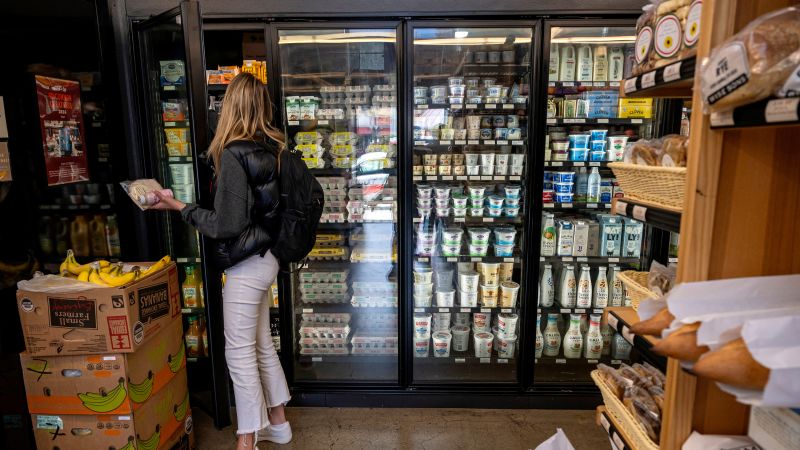If you want to know how much a publicly traded company is worth at any given time, all you have to do is look up its market cap, which updates in real time during trading hours.
But if you want to know how fast prices are rising in the US, you get two official updates a month — the Consumer Price Index and the Personal Consumption Expenditures price index. Both come with a lag, can be revised several months later and can even be indefinitely delayed in the event of a government shutdown, as was almost the case with September’s inflation data.
Despite these shortcomings, officials at the Federal Reserve rely on these government reports to help make crucial monetary policy decisions that directly influence the interest rates you pay on your mortgage and other kinds of debt. The inflation rate the government arrives at also impacts how much you receive in Social Security benefits and likely is a factor in determining your pay.
But a novel real-time inflation gauge called Truflation is trying to fix some of the issues with government inflation data that has long been considered the gold standard.
While it’s valuable to have regularly updated inflation data, Truflation doesn’t have as much access to certain categories the government data tracks, namely education and health care prices, two big expenses for many Americans. The government also has a much longer history of producing inflation reports with extremely thorough standards.
Unlike PCE and CPI, Truflation arrives at a new inflation rate on a near-daily basis, drawing from over 60 different data sources that provide three unique prices across more than 18 million goods and services. Some of the data providers include Amazon, Walmart, Nielsen, Hilton and Zillow.
While the Bureau of Labor Statistics, the division of the Labor Department that produces monthly CPI reports, enlists a team of people to either physically go to businesses, call them up or scan websites to collect pricing data for 80,000 goods and services across the country, Truflation pays for some of the data.
Over time, more providers have been sharing data for free because they recognize that having it incorporated into the model will give them more updated and accurate information on how competitive their pricing is, Stefan Rust, CEO and founder of Truflation, told CNN.
That data goes through a rigorous process incorporating blockchain technology to verify its authenticity, which Truflation outlines in its public 20-page methodology.
Like PCE and CPI, Truflation assigns relative importance values to categories to mirror how an average consumer’s income is allocated. For most consumers, housing accounts for the majority of their spending, and is therefore assigned a greater weight than, for instance, clothing. That’s why small increases in the cost of housing can end up having big impacts on the overall inflation rate.
Truflation uses the same process the government does to calculate relative importance, but it uses some different data to determine how consumers allocate their income. That accounts for some of the variation between the government’s inflation data and Truflation’s.
Another discrepancy is that Truflation’s data is not seasonally adjusted, whereas the government’s monthly data is. That means that an increase in utility prices during the summer when it’s typically more expensive to cool your home would show up more in Truflation’s data than the government’s.
As of Wednesday, Truflation put the nation’s annual inflation rate at 2.23%, just inches away from the Fed’s 2% target. In contrast, May’s CPI report released Wednesday morning arrived at a 3.3% inflation rate, matching precisely what Truflation predicted the gauge would come in at based on its data. Truflation is able to predict what government inflation reports will show by adjusting their data to when the government goes out and collects its own pricing data to form its monthly reports.
Wall Street traders were the first group drawn to Truflation, Rust said. “They wanted the data to help them calculate where they felt, based on our data, the government BLS numbers would come out on.”
Danielle DiMartino Booth, who advised Richard Fisher when he was the president of the Dallas Fed and who is now CEO and chief strategist at QI Research, said she uses Truflation “to identify where price pressures are cropping up” on a daily basis. That gives her a “better feel” of what’s happening on the ground versus the government’s data, Booth told CNN.
While Fed officials have taken a greater interest in analyzing economic data from non-government sources to help shape their views on the economy, it remains to be seen if and how they’re using Truflation data. But it’s on their radar, said Rust, who says he has met with researchers from the New York and Dallas Fed.
Read the full article here




